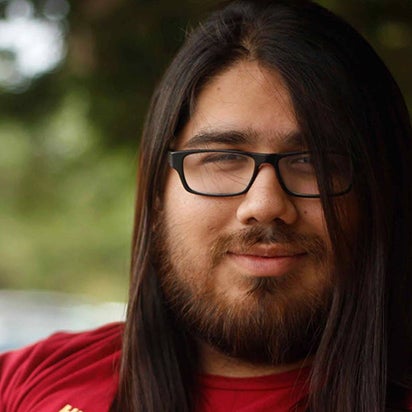One Church Many Cultures The Good News of Cultural Diversity Fall/Winter 2020 Issue
CULTURAL FAMILY ARTICLE: NATIVE AMERICAN
We Journey Together
By: Makȟá Akáŋ Nažíŋ Black Elk, Executive Director for Truth and Healing, Red Cloud Indian School
Members of Indigenous communities across the country gathered in a Zoom meeting together to share with each other our stories and experiences as Catholic and Native Americans. I was struck by the novelty of the occasion. I have never intentionally engaged with other Native Catholic people before this moment to reflect on our experiences. Of course, I engage in my Catholic faith with other Native people often in my own parish and have been a part of workshops and discussions with other Catholic schools that serve Native people. But that was always prayer in practice. Rare is it that we’ve taken the time to ask each other, “What does it mean for us to be Catholic? What draws us to this faith journey? What challenges us and others in this journey?”
It is not entirely uncommon to be asked the question, “How can you be Native American and Catholic?” It’s an understandable question. We know the truth of the history that many Native peoples experienced in the brutal colonization of this nation in which the Catholic church played no small part. So, it’s easy to see why someone might question the very nature of this paradox. One of my fellow participants in the conversation spoke to this, “I see my Catholic faith as a more important part of my identity than my Native heritage.” While we always have various components of ourselves rise and fall as we relate to others I found this idea part of a longstanding tradition in talking about Native peoples. That we walk in two worlds, one Native, and one the Other.
But the truth is that we do not have to choose. I am proud of my Lakota identity and it forms a core part of who I am. But I am also proud of my Catholic faith and find comfort, community, and most importantly, a relationship to God. Too often indigenous peoples are asked to choose between their traditions, culture, and heritage and the Other. As though they are fundamentally at odds. Forever in competition and bound for one to lose the fight. We should not have to be at war. The beauty of this time together highlighted the beauty of just how incredibly resilient, resourceful, and part of the future we are.
Our indigenous identity has often been portrayed as a barrier to others, but it can equally become how we stand strong among our fellows. This is the continued invitation also to our non-Indigenous relatives. To build relationships, you must begin to know us. This journey we take in knowing ourselves and building bridges to others is one of the most important steps to true healing.

